 This London-based electroacoustic composer/instrument builder/DIY electronics enthusiast has been engaged in projects and activities for more than a decade now, but this latest album is the first time his singular vision crossed my path. Antiqua Graecia is the final release of a Greek-themed trilogy that began with 2018's Musique con Crète, though there is also a fourth related work that surfaced on Chocolate Monk last year (Greek Drama). The series is the fruit of an extended creative research project that initially began with a residency, but blossomed into repeat summer visits to Crete to hunt for traditional music albums, perform with local musicians, and make field recordings. While I have not fully absorbed the entire series yet, Antique Graecia feels like a significant creative leap forward from previous installments, as Tamou's earlier Greek forays resemble a Sublime Frequencies album dissolved into a fever dream: there was a clear reverence for the source material, yet Tamou's sound collages imbued traditional music with a murky, spectral character. With Antiqua Graecia, Tamou decided to go for broke, gleefully chopping and layering folk songs in a wonderfully psychotropic fantasia. I find all of the strains of Tamou's Greek series to be compelling, but this album is the one that most beautifully transcends tradition to feel like something wonderful and new.
This London-based electroacoustic composer/instrument builder/DIY electronics enthusiast has been engaged in projects and activities for more than a decade now, but this latest album is the first time his singular vision crossed my path. Antiqua Graecia is the final release of a Greek-themed trilogy that began with 2018's Musique con Crète, though there is also a fourth related work that surfaced on Chocolate Monk last year (Greek Drama). The series is the fruit of an extended creative research project that initially began with a residency, but blossomed into repeat summer visits to Crete to hunt for traditional music albums, perform with local musicians, and make field recordings. While I have not fully absorbed the entire series yet, Antique Graecia feels like a significant creative leap forward from previous installments, as Tamou's earlier Greek forays resemble a Sublime Frequencies album dissolved into a fever dream: there was a clear reverence for the source material, yet Tamou's sound collages imbued traditional music with a murky, spectral character. With Antiqua Graecia, Tamou decided to go for broke, gleefully chopping and layering folk songs in a wonderfully psychotropic fantasia. I find all of the strains of Tamou's Greek series to be compelling, but this album is the one that most beautifully transcends tradition to feel like something wonderful and new.
This is an album of top-tier psychedelic mindfuckery from start to finish, which makes it very hard to describe with any concise generalizations, but a rough summary like "a supernatural fun house at the center of a Greek street fair" is probably a solid starting point. There is a distinct arc, however, as the first few drone-based pieces steadily deepen my immersion in Tamou's otherworldly fantasia to prime me for the wilder plunges to come. For example, "Madoura" sounds like a nightmarishly insectoid cacophony of buzzing bagpipe-like drones, while the following "Poor Mum" sounds like mid-90s Dead Can Dance made a lysergic soundscape from Nonesuch Explorer classics. We then pass through something akin to a flickering and phantasmagoric Scottish parade in a haunted jungle ("Oil Wrestling"), a phantom rembetiko song with an electronic doppelganger ("Taki’s Sorrow"), and a Lisa Gerrard-sung DCD classic consumed by a sickly, dissonant delirium of smeared chimes ("A Woman's Moan"). All are a delight, but the album fully catches fire with the sixth piece, "Just Pagan." It begins as a psychotropic throb of heavy electronic drones and surreal, jumbled, and haunting layers of melody and field recordings, but gradually transforms into a heartsick folk dance. The following "Epitaph" is yet another highlight, as the gong of a church bell leaves a ringing, bleary haze of high frequencies that morphs into a squirming, menacing electronic buzz mingled with a chanting street procession. The final piece brings that trend of escalating otherworldliness to its curious crescendo, as it feels like a cathedral is invaded by a churning, honking, and squawking cacophony (and a cow) before everything dissolves into a disarmingly sweet and calm rustic oasis. Tamou truly outdid himself with this tour de force, as all of these eight songs seamlessly blur sacred and traditional sounds with vivid, multilayered psychedelia in impressively singular fashion.
Samples can be found here.


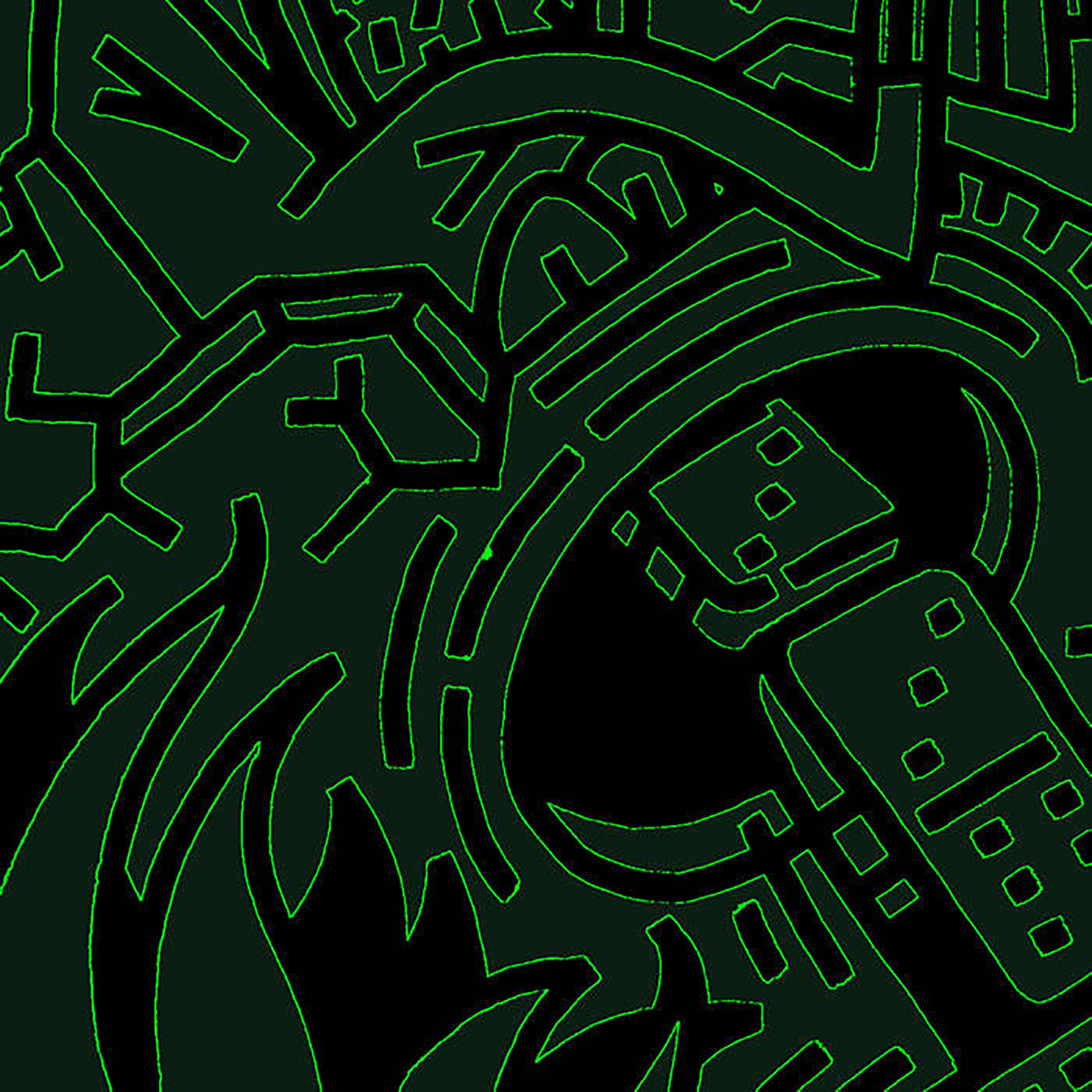 This debut full-length from Ugandan producer Zilla is something of a much-anticipated event, as his Boutiq studio is a crucial part of the killer underground music scene centered around Kampala's Nyege Nyege Tapes. Ekizikiza Mubwengula was additionally anticipated because it is the follow up to an absolute monster of a single that Zilla released in 2019 on Nyege Nyege's club music-themed sub-label Hakuna Kulala. While this latest release is on that same imprint, these songs are considerably wilder and weirder than the more straightforward (and relentlessly, viscerally danceable) "From the Cave." With Ekizikiza Mubwengula, Zilla shoots right past the cutting edge of contemporary dance music and lands somewhere akin to an industrial-damaged dance deconstruction of Rashad Becker's deeply alien Music for Notional Species. Predictably, I am the exact demographic for such a gleefully unhinged tour de force, and this would be the ideal soundtrack for a party occurring exclusively in my head. Yet it is quite a challenge to imagine songs this pointedly hookless and aggressively outré packing the floors of any but the craziest clubs on earth. Granted, there are a handful of more straightforward pieces here too (Zilla's production is as exacting and punchy as ever), but those will not be the ones that people most remember.
This debut full-length from Ugandan producer Zilla is something of a much-anticipated event, as his Boutiq studio is a crucial part of the killer underground music scene centered around Kampala's Nyege Nyege Tapes. Ekizikiza Mubwengula was additionally anticipated because it is the follow up to an absolute monster of a single that Zilla released in 2019 on Nyege Nyege's club music-themed sub-label Hakuna Kulala. While this latest release is on that same imprint, these songs are considerably wilder and weirder than the more straightforward (and relentlessly, viscerally danceable) "From the Cave." With Ekizikiza Mubwengula, Zilla shoots right past the cutting edge of contemporary dance music and lands somewhere akin to an industrial-damaged dance deconstruction of Rashad Becker's deeply alien Music for Notional Species. Predictably, I am the exact demographic for such a gleefully unhinged tour de force, and this would be the ideal soundtrack for a party occurring exclusively in my head. Yet it is quite a challenge to imagine songs this pointedly hookless and aggressively outré packing the floors of any but the craziest clubs on earth. Granted, there are a handful of more straightforward pieces here too (Zilla's production is as exacting and punchy as ever), but those will not be the ones that people most remember.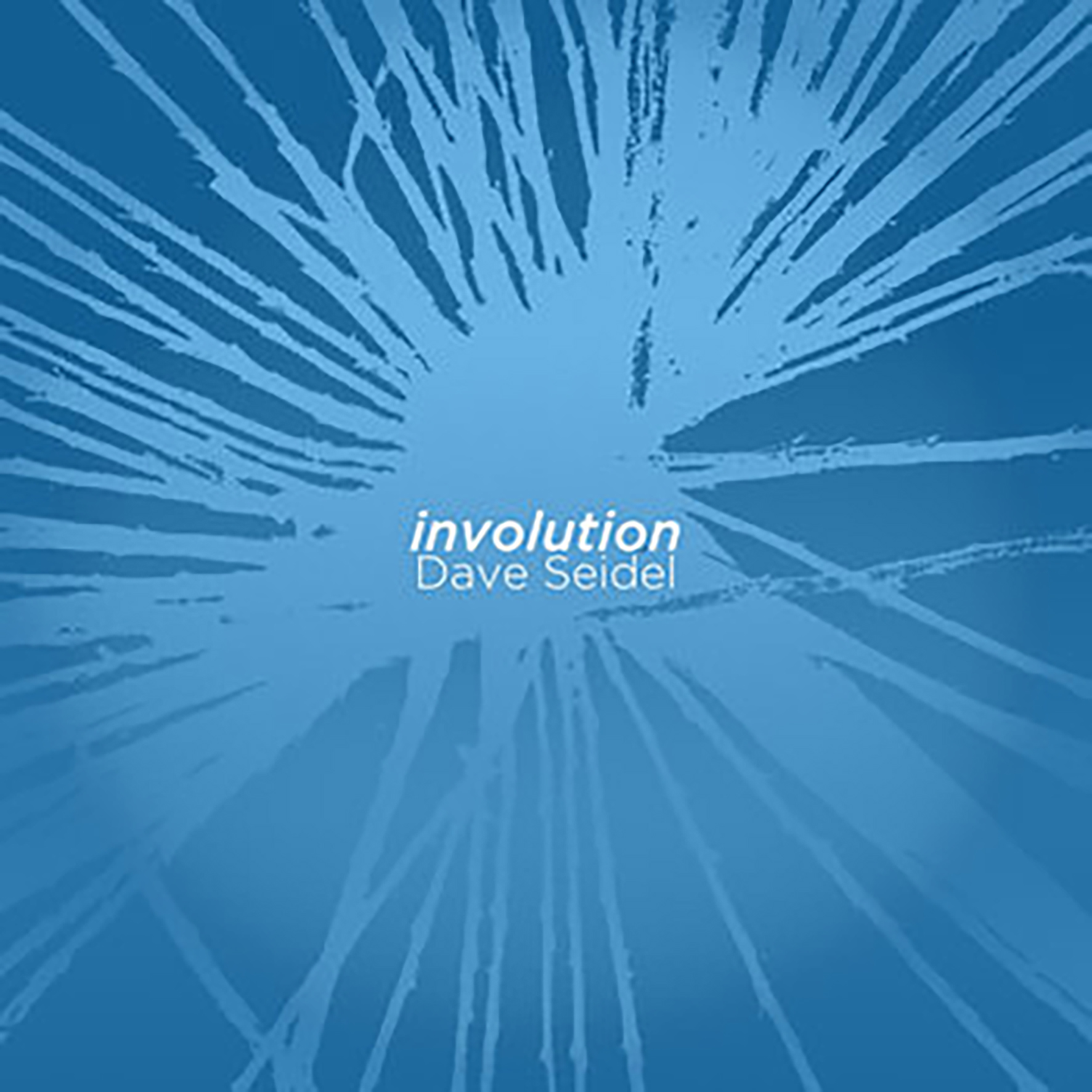 This challenging and overwhelming double album is my first exposure to this NH-based composer, and it was quite a synapse-frying introduction to his uncompromising vision. While Seidel has only been releasing albums as a composer for the last decade or so, he was an active part of NYC's flourishing Downtown music scene in the '80s, and his work feels like it is spiritually descended from that era. Or perhaps from even before that, as he cites Alvin Lucier and La Monte Young as key influences. Unlike most artists inspired by Young, however, Seidel did not stop at dabbling in Just Intonation. Instead, he took "Young's ideal of previously unheard sounds, those that may engender new sensations and emotions in the listener" and ran with it, delving even deeper into unusual tunings until he could bring to life the sonorities that he was chasing. In practical terms, that means that the two compositions here ("Involution" and "Hexany Permutations") are longform drone works teaming with strange and buzzing harmonic collisions, which makes Phill Niblock's XI Records exactly the right home for this epic. While I suspect many people will find Seidel's single-minded and no-frills approach to conjuring unfamiliar sounds intimidatingly difficult, this album will definitely make a big impression on anyone fascinated by the physics and physicality of sound.
This challenging and overwhelming double album is my first exposure to this NH-based composer, and it was quite a synapse-frying introduction to his uncompromising vision. While Seidel has only been releasing albums as a composer for the last decade or so, he was an active part of NYC's flourishing Downtown music scene in the '80s, and his work feels like it is spiritually descended from that era. Or perhaps from even before that, as he cites Alvin Lucier and La Monte Young as key influences. Unlike most artists inspired by Young, however, Seidel did not stop at dabbling in Just Intonation. Instead, he took "Young's ideal of previously unheard sounds, those that may engender new sensations and emotions in the listener" and ran with it, delving even deeper into unusual tunings until he could bring to life the sonorities that he was chasing. In practical terms, that means that the two compositions here ("Involution" and "Hexany Permutations") are longform drone works teaming with strange and buzzing harmonic collisions, which makes Phill Niblock's XI Records exactly the right home for this epic. While I suspect many people will find Seidel's single-minded and no-frills approach to conjuring unfamiliar sounds intimidatingly difficult, this album will definitely make a big impression on anyone fascinated by the physics and physicality of sound. This is the first installment of "an ongoing album series with an undecided end point examining futility and beauty." Those are hardly new themes for Kyle Bobby Dunn, so I am not sure why they needed their own series, but any new KBD opus is fine by me. Dunn is a unique figure in the ambient drone milieu for a number of reasons, but the most significant for me is his unique gift for crafting soundscapes with a very real emotional intensity at their core. When he directly hits the mark with a composition like "Triple Axel on Cremazie" or "The Searchers," he achieves something poignant and transcendent that is damn hard to come by. I suppose one caveat with Dunn's work is that such moments are usually hidden within sprawling double-, triple-, or quadruple-LP epics, but this latest album is a more focused and concise release. More importantly, the bulk of the album is devoted to the absolutely sublime 48-minute "Fantasia on a Theme of Affection." The other two pieces are memorable as well, arguably making this the closest that Dunn has come to releasing an "all killer, no filler" masterpiece.
This is the first installment of "an ongoing album series with an undecided end point examining futility and beauty." Those are hardly new themes for Kyle Bobby Dunn, so I am not sure why they needed their own series, but any new KBD opus is fine by me. Dunn is a unique figure in the ambient drone milieu for a number of reasons, but the most significant for me is his unique gift for crafting soundscapes with a very real emotional intensity at their core. When he directly hits the mark with a composition like "Triple Axel on Cremazie" or "The Searchers," he achieves something poignant and transcendent that is damn hard to come by. I suppose one caveat with Dunn's work is that such moments are usually hidden within sprawling double-, triple-, or quadruple-LP epics, but this latest album is a more focused and concise release. More importantly, the bulk of the album is devoted to the absolutely sublime 48-minute "Fantasia on a Theme of Affection." The other two pieces are memorable as well, arguably making this the closest that Dunn has come to releasing an "all killer, no filler" masterpiece.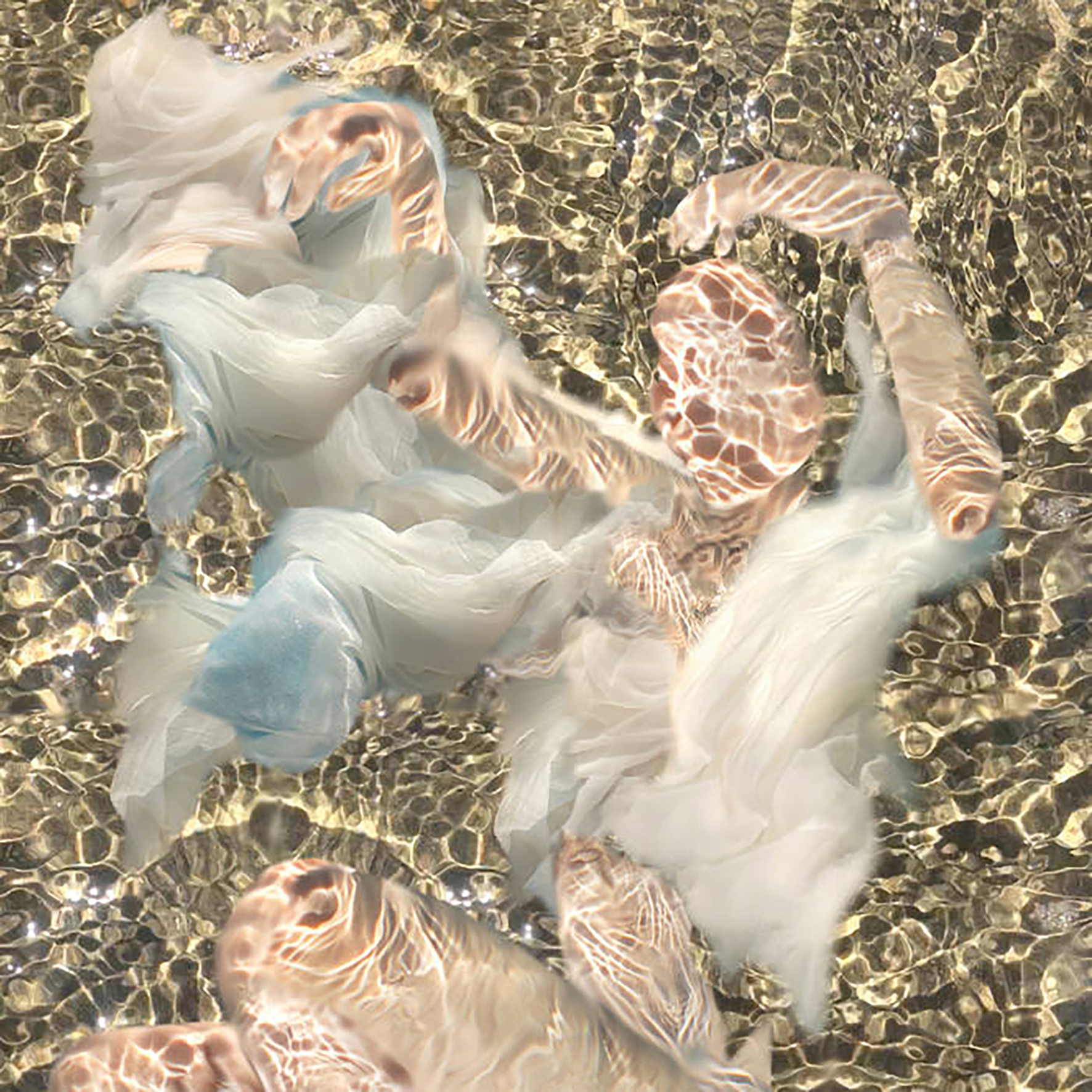 I loved Sage Fisher's last album (the wonderful and hallucinatory Liminal Garden), so I was quite eager to find out how she would follow such a unique vision. Now that Body of Water has been released, I have my answer and it is very much an expectation-subverting one. While the harp arguably remains Fisher's primary instrument, her vocals take a much more prominent role with this latest opus. That is a twist, certainly, but it is not THE twist, which is that Fisher enlisted the aid of acclaimed producer Tucker Martine to craft a suite of songs that feels like a sensual and psychotropic strain of outsider R&B. Whether it is close enough to the real thing to make an impact beyond underground electronic music circles remains to be seen, but Fisher's stylistic reinvention is an extremely cool and surprising one regardless. Admittedly, it took me a few listens to fully warm to the unabashed pop hooks that fill this album, but Fisher's more lysergic impulses are never far away, resulting in an immersive swirl of delightful mindfuckery anchored by memorable hooks, simmering grooves, and a newly unveiled soulfulness.
I loved Sage Fisher's last album (the wonderful and hallucinatory Liminal Garden), so I was quite eager to find out how she would follow such a unique vision. Now that Body of Water has been released, I have my answer and it is very much an expectation-subverting one. While the harp arguably remains Fisher's primary instrument, her vocals take a much more prominent role with this latest opus. That is a twist, certainly, but it is not THE twist, which is that Fisher enlisted the aid of acclaimed producer Tucker Martine to craft a suite of songs that feels like a sensual and psychotropic strain of outsider R&B. Whether it is close enough to the real thing to make an impact beyond underground electronic music circles remains to be seen, but Fisher's stylistic reinvention is an extremely cool and surprising one regardless. Admittedly, it took me a few listens to fully warm to the unabashed pop hooks that fill this album, but Fisher's more lysergic impulses are never far away, resulting in an immersive swirl of delightful mindfuckery anchored by memorable hooks, simmering grooves, and a newly unveiled soulfulness.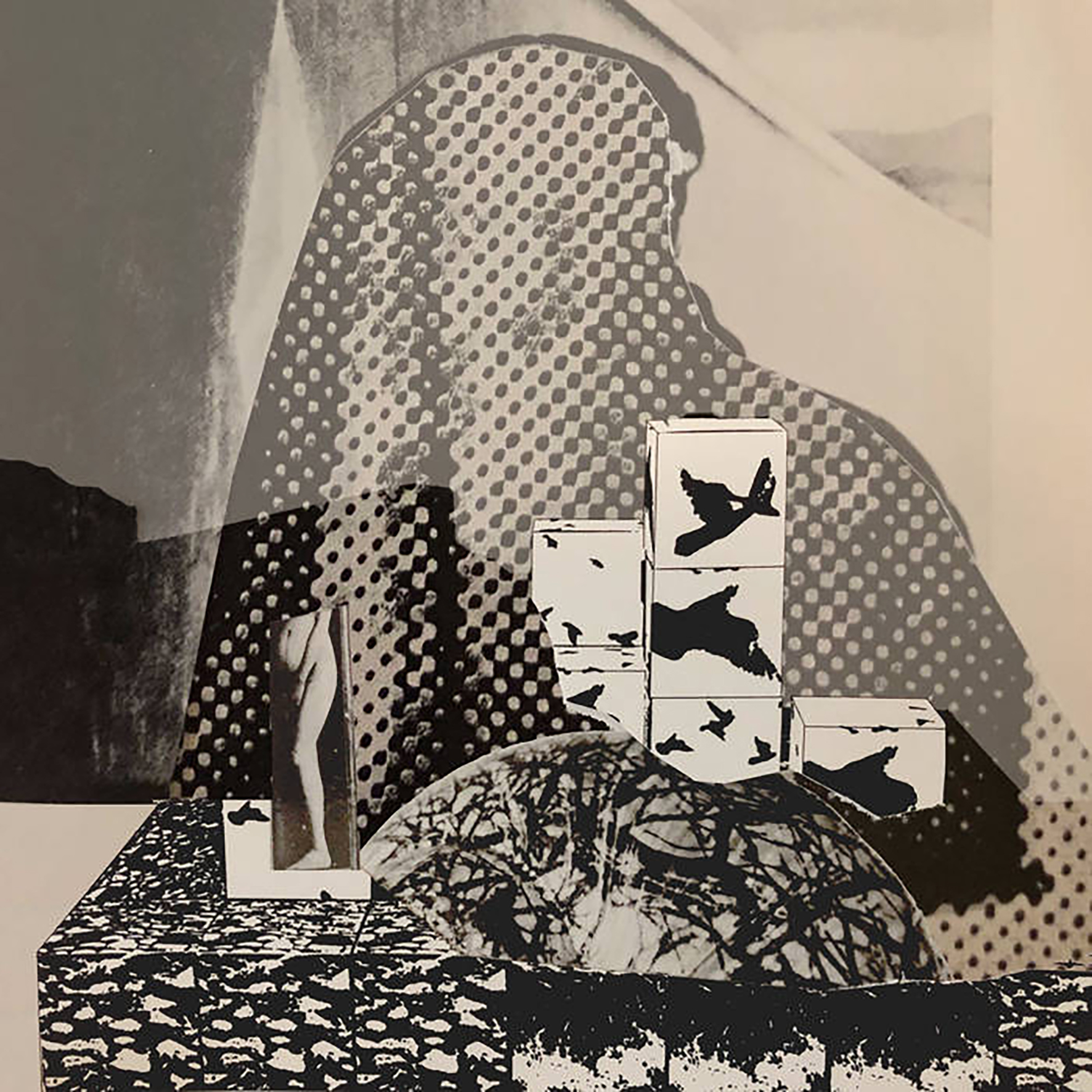 There was a period between 2010 and 2013 in which Rachel Evans seemed like a universally celebrated and ubiquitous figure in the "experimental music" milieu, as she released a flurry of tapes and LPs on a variety of great labels in a very short span. Since then, she has embraced a considerably more quiet and homespun approach to her art, self-releasing a steady and increasingly eclectic stream of limited edition tapes/CDrs/art objects to the delight of fans like myself. This latest release is an especially divergent and ambitious one, as Evans rarely releases vinyl and even more rarely shifts her focus towards acoustic instrumentation or conventional songcraft. The latter deserves an asterisk though, as there is only one brief song lurking within these two longform soundscapes and it largely appears in submerged form, but it is still quite a good one regardless. While the appearance of that surprise song is very much an album highlight, it is just one part of a larger and wonderfully hallucinatory whole. In fact, If We Were Landscapes is strong evidence that the golden age of Motion Sickness of Time Travel is still unfolding and that Evans' acclaimed run of albums like Seeping Through the Veil of Unconscious was actually just the tip of an expanding iceberg of future delights.
There was a period between 2010 and 2013 in which Rachel Evans seemed like a universally celebrated and ubiquitous figure in the "experimental music" milieu, as she released a flurry of tapes and LPs on a variety of great labels in a very short span. Since then, she has embraced a considerably more quiet and homespun approach to her art, self-releasing a steady and increasingly eclectic stream of limited edition tapes/CDrs/art objects to the delight of fans like myself. This latest release is an especially divergent and ambitious one, as Evans rarely releases vinyl and even more rarely shifts her focus towards acoustic instrumentation or conventional songcraft. The latter deserves an asterisk though, as there is only one brief song lurking within these two longform soundscapes and it largely appears in submerged form, but it is still quite a good one regardless. While the appearance of that surprise song is very much an album highlight, it is just one part of a larger and wonderfully hallucinatory whole. In fact, If We Were Landscapes is strong evidence that the golden age of Motion Sickness of Time Travel is still unfolding and that Evans' acclaimed run of albums like Seeping Through the Veil of Unconscious was actually just the tip of an expanding iceberg of future delights.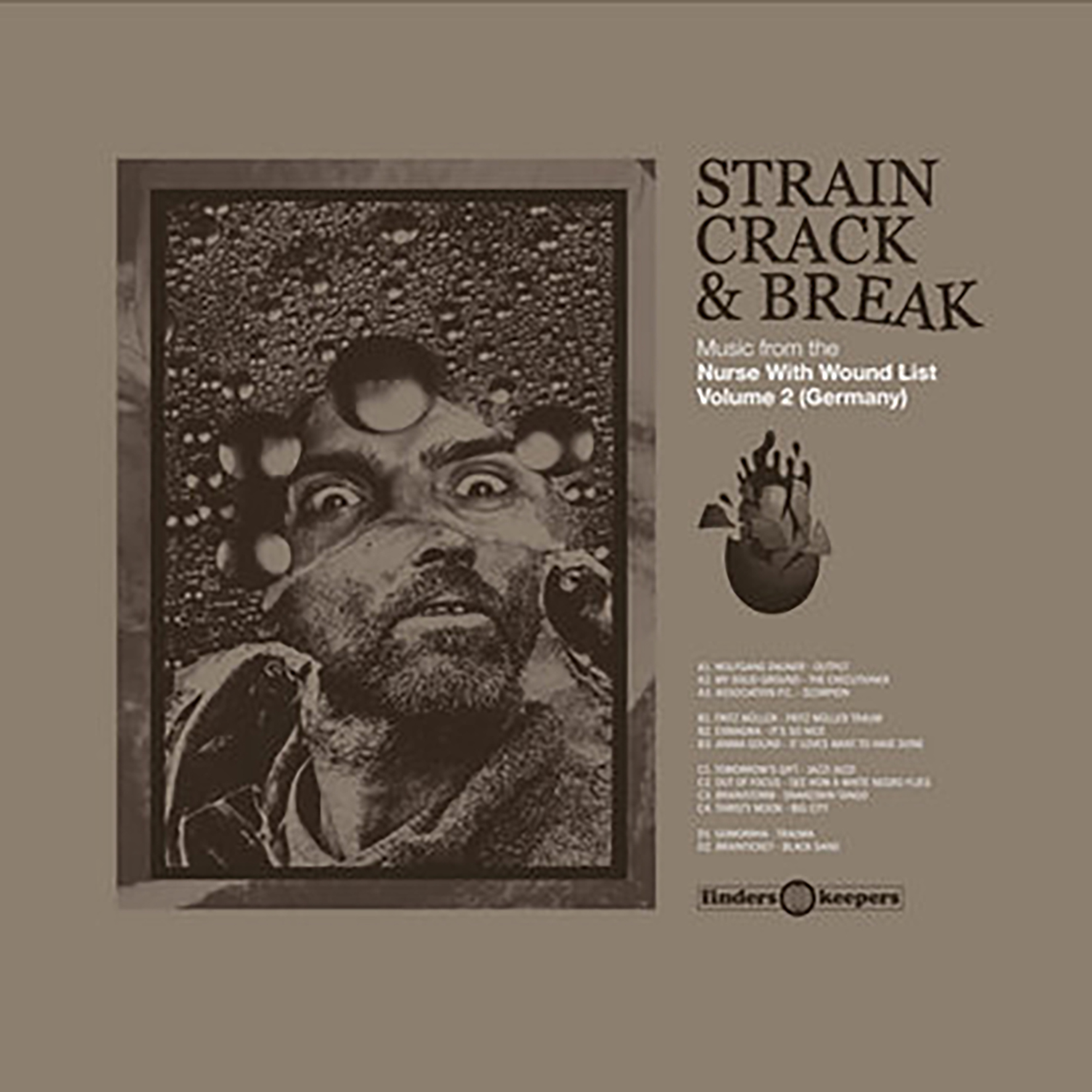 As a longtime Nurse With Wound fan, I have always been a bit amused and perplexed by the almost-religious reverence that people continue to have for Steven Stapleton's famous list. For one, it is hard to process that there was once a teenager in the '70s who was so cool that adults all over the world would spend the next forty years trying to replicate his record collection. Secondly, it seems like any underground bands from that era who have managed to remain obscure until now have probably earned that fate for valid reasons, as there have been plenty of blogs and reissue labels tirelessly unearthing and championing freaky sounds since the advent of the internet. Consequently, when this series was announced, I wondered what could still possibly be left undiscovered. That said, the idea of a Stapleton-curated tour of the most outré and adventurous prog, jazz, and avant-garde artists of the early- and mid-1970s still packs quite an appeal for me, so I am delighted that this better-late-than-never series exists. It admittedly took me a while to warm to the French volume, as I tend to run screaming from proggy indulgence and unfiltered Dada antics and there was plenty of both, but there were definitely some gems as well. Unsurprisingly, this stronger second volume features an even higher proportion of such gems, as it is not a mere coincidence that krautrock had a larger cultural impact than its French counterpart.
As a longtime Nurse With Wound fan, I have always been a bit amused and perplexed by the almost-religious reverence that people continue to have for Steven Stapleton's famous list. For one, it is hard to process that there was once a teenager in the '70s who was so cool that adults all over the world would spend the next forty years trying to replicate his record collection. Secondly, it seems like any underground bands from that era who have managed to remain obscure until now have probably earned that fate for valid reasons, as there have been plenty of blogs and reissue labels tirelessly unearthing and championing freaky sounds since the advent of the internet. Consequently, when this series was announced, I wondered what could still possibly be left undiscovered. That said, the idea of a Stapleton-curated tour of the most outré and adventurous prog, jazz, and avant-garde artists of the early- and mid-1970s still packs quite an appeal for me, so I am delighted that this better-late-than-never series exists. It admittedly took me a while to warm to the French volume, as I tend to run screaming from proggy indulgence and unfiltered Dada antics and there was plenty of both, but there were definitely some gems as well. Unsurprisingly, this stronger second volume features an even higher proportion of such gems, as it is not a mere coincidence that krautrock had a larger cultural impact than its French counterpart.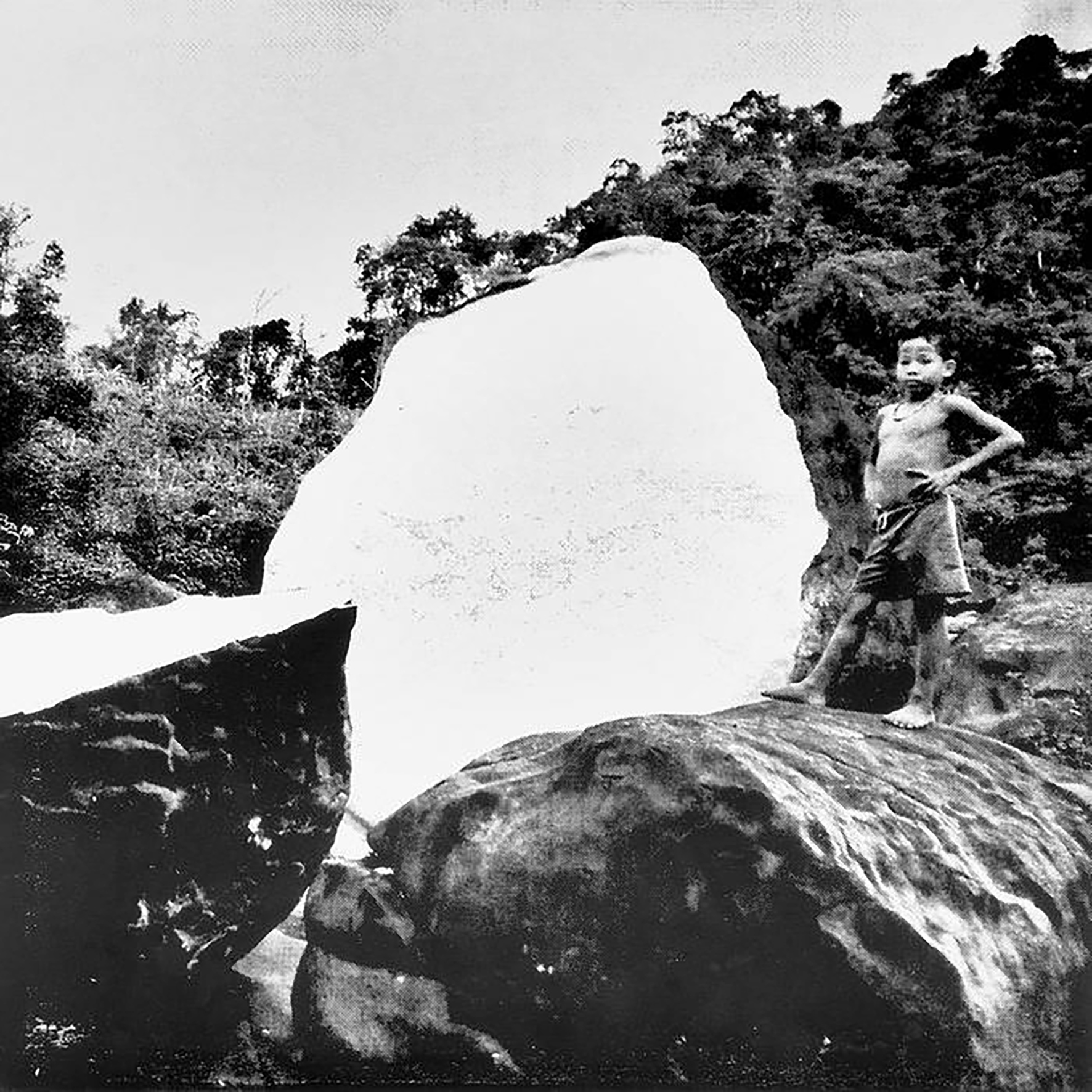 It is quite a daunting task to keep up with Laurent Jeanneau's massive, continually expanding, and oft-challenging discography, but his vinyl releases always tend to be strong and focused statements worth investigating. In that regard, Jeanneau is having quite a great year, as this latest LP is his third excellent album of 2021 (Kink Gong's Zomia Vol. 1 and Sublime Frequencies' Mien (Yao) being the other two). Zomianscape continues Jeanneau's fascination with "Zomia," which is a half-conceptual/half-geographic term for the ethnic minorities in the hills and mountains of Southeast Asia who live outside national laws and customs. The term was first coined by historian Willem van Schendel in 2002, but it was James C. Scott's The Art of Not Being Governed: An Anarchist History of Upland Southeast Asia that particularly struck Jeanneau, as he conceived of the Zomia series as a "mythological soundscape inspired by a semi-utopic region where state rules don't apply." The raw material for these first two longform "Zomianscapes" was recorded over ten years in Cambodia, Laos, Vietnam, and China, but the boundaries between individual cultures, field recordings, and Jeanneau's own contributions are beautifully dissolved into a mesmerizing stew of hallucinatory sound collage. I suppose Zomia Vol. I achieved a similar end in more bite-sized doses, but this follow up offers a deeper, more immersive plunge.
It is quite a daunting task to keep up with Laurent Jeanneau's massive, continually expanding, and oft-challenging discography, but his vinyl releases always tend to be strong and focused statements worth investigating. In that regard, Jeanneau is having quite a great year, as this latest LP is his third excellent album of 2021 (Kink Gong's Zomia Vol. 1 and Sublime Frequencies' Mien (Yao) being the other two). Zomianscape continues Jeanneau's fascination with "Zomia," which is a half-conceptual/half-geographic term for the ethnic minorities in the hills and mountains of Southeast Asia who live outside national laws and customs. The term was first coined by historian Willem van Schendel in 2002, but it was James C. Scott's The Art of Not Being Governed: An Anarchist History of Upland Southeast Asia that particularly struck Jeanneau, as he conceived of the Zomia series as a "mythological soundscape inspired by a semi-utopic region where state rules don't apply." The raw material for these first two longform "Zomianscapes" was recorded over ten years in Cambodia, Laos, Vietnam, and China, but the boundaries between individual cultures, field recordings, and Jeanneau's own contributions are beautifully dissolved into a mesmerizing stew of hallucinatory sound collage. I suppose Zomia Vol. I achieved a similar end in more bite-sized doses, but this follow up offers a deeper, more immersive plunge. Recorded live at Tokyo’s Super Deluxe club in 2017, this trio's 10th release is dedicated to Hideo Ikeezumi, founder of the incredible P.S.F. label and Modern Music store who died the same day. Mr.Ikeezumi was a fierce and relentless advocate for Japan’s underground scene and an early champion of Haino. For this concert, the three agreed their unrehearsed improvisation would be “electronic” but not which instruments any of them would play. Haino also uses a double-reed horn, the suona, traditionally used in a variety of settings and rituals including funerals, producing blaring, high-pitched sounds for both the living and the dead. I find this a bold, delicate, fascinating, and ultimately rather moving, album; albeit with a title far too long to mention in such a brief review.
Recorded live at Tokyo’s Super Deluxe club in 2017, this trio's 10th release is dedicated to Hideo Ikeezumi, founder of the incredible P.S.F. label and Modern Music store who died the same day. Mr.Ikeezumi was a fierce and relentless advocate for Japan’s underground scene and an early champion of Haino. For this concert, the three agreed their unrehearsed improvisation would be “electronic” but not which instruments any of them would play. Haino also uses a double-reed horn, the suona, traditionally used in a variety of settings and rituals including funerals, producing blaring, high-pitched sounds for both the living and the dead. I find this a bold, delicate, fascinating, and ultimately rather moving, album; albeit with a title far too long to mention in such a brief review.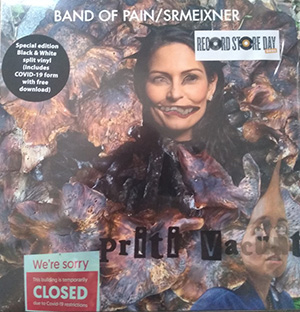 Taking a cue from the politicization of the COVID pandemic, Band of Pain (Steve Pittis) and Contrastate's Stephen Meixner teamed up for this collaborative single, with each taking the lead on a solo piece, and then a balanced collaboration to conclude. Heavily based on samples of speeches and news reports, it is certainly a politically charged work, but one that remains heavily rooted in both artists’ post-industrial and absurdist sensibilities.
Taking a cue from the politicization of the COVID pandemic, Band of Pain (Steve Pittis) and Contrastate's Stephen Meixner teamed up for this collaborative single, with each taking the lead on a solo piece, and then a balanced collaboration to conclude. Heavily based on samples of speeches and news reports, it is certainly a politically charged work, but one that remains heavily rooted in both artists’ post-industrial and absurdist sensibilities.
